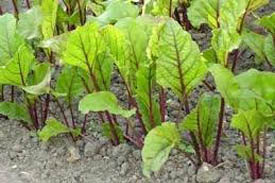How to save seeds: Tomatoes I
The reason we save our own non-hybrid seed is that each new generation of plants adapt to our locale with successfully better plants. Also, it is a true gardener’s pastime that is rewarding in selecting the best of the best for regeneration.
Monsanto™ is rapidly overcoming the seed market with hybrid and genetically modified seeds; dominating the market with what you eat; there will soon be less and less of the heritage non-hybrid seeds left. Only you can be a bastion of self-sufficient sustainable gardening for your children’s children.
Tomatoes are gooey and offer a challenge to seed savers. With a great deal of experimentation over the past thirty years I have perfected viable method(s) of extracting the seeds, treating them, and storing with success. Let’s get started now.
You will need three round bottom large salad bowls, a small ½ gallon pot, a large strainer, paper plates, a marker pen, paper towels, paper coffee filters, and a bottle of bleach. Although the process can be done in a kitchen I prefer to do this outside as I am messy, and I like a hose for flushing, as we will use a lot of water.
In this demonstration I am processing three separate varieties of non-hybrid tomatoes: (1) Carpathian Pink, (2) Roma Paste, (3) Presto. Notice that each salad bowl is full of over ripe tomatoes, sitting on a well-marked paper plate. You have to get in the habit of identifying the seed source or in time when you have twenty of so varieties you will have a headache trying to match what is what at the time you want to start seedlings.
You will strive for over ripe, bottom picked tomatoes of good shape and disease free. If you can let them reach a stage of rot, all the better, as the natural propagation of the tomatoes fruit is to create an acidic base that protects the seeds while strengthening the seed germ from the pulp’s nutrition. The outer skin becomes denser and harder and by spring time the tomato has the consistency of a thin shell protecting the seeds. Very Old Timers often set their precious seed tomatoes in a protected area from birds and weather-perhaps a shelf- and gathered them in the spring. I have found this method somewhat desperate and unreliable; as birds, mice and mold prevail.
STEP # 1: Set the other bowls away from the working bowl. Now insert your thumb into the squishy tomato (Ladies may wear rubber gloves), and pop the seed cluster out. Rinse off any clinging seeds to the “shell” of the tomato and discard the shell.
STEP # 3 Mash up the seed pulp, add water and a cap full of bleach. Keep squeezing, and mashing. Finger swirl the mess in a clockwise motion adding water to make it as soupy as possible. Let the bowl set. Note that there are two kinds of seeds: Floaters and sinkers. The floaters are hollow and will be skimmed off, and the sinkers saved.
Thusly it is a gradual practice of adding water, skimming off by decanting the swirling pulp and letting the seeds settle to the bottom of the bowl.
Eventually you will have clear water and a mass of seeds at the bottom of the bowl.
Add more bleach, a couple splashes, and let it set for a few minutes. The bleach is necessary to kill viruses, bacteria and mold spores. Also there may be tiny insect eggs or larvae, mixed in the seeds and this will kill off most living organisms.
Now you are ready to swirl the water again, decanting the water off and keeping the seeds inside the bowl. This whole process involves a safety net for you with the large strainer as it captures tomato goo as well as precious seeds. Keep watering; swirling and decantering. Soon you will become experienced.
STEP # 3: Lastly, you can take the less wet gob of seeds and pour into a coffee paper filter and let set-then re-pour into a paper plate-well marked of course.
The bleach soaked seeds will require drying. The best method is to use the bread bakers/sprouters drying dehydrator (80 degree F.) such as an Excalibur ™. Lacking this, place in a warm, dry area with some air circulation and they will dry out nicely. Expect some sticking of seeds-this is normal and you can break up clumps with your thumb.
STEP # 4: I store my seeds in baby food junior glass jars. I drill a small 1/8” hole through the cap to equalize air pressure/vacuum effects. Add a few grains of dry white rice to absorb moisture. Label the jars. Also used medicine containers, small jars, etc. are all good. Later on you will decide what you want and what works best for you in small containers. They will keep like this for 5 years or more in a dry area. You can freeze them, or refrigerate them, IF you have a FROST FREE refrigerator/freezer.
Contact me at: back2theland@swva.net
COPYRIGHT: 2008 Back2theLand, Mark Steel



